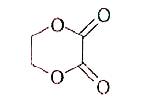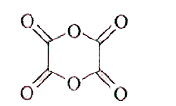When diethyl ether is heated with conc. sulfuric acid under pressure, it forms
Propanoic acid
Acetic acid
Ethyl alcohol
Acetic acid
The correct Answer is:C
To solve the question of what happens when diethyl ether is heated with concentrated sulfuric acid under pressure, we can follow these steps:
1. Identify the Reactants:
- The reactants are diethyl ether (C2H5-O-C2H5) and concentrated sulfuric acid (H2SO4).
2. Understand the Reaction Conditions:
- The reaction is conducted under heat and pressure, which can facilitate the breaking of bonds in the ether.
3. Break Down the Ether:
- Diethyl ether can be represented as C2H5-O-C2H5. When it reacts with concentrated sulfuric acid, the ether bond (C-O) can be broken.
4. Protonation of Ether:
- The sulfuric acid dissociates into H+ and HSO4-. The H+ ion can protonate the ether oxygen, making it more susceptible to nucleophilic attack.
5. Formation of Ethanol:
- The protonated ether can undergo cleavage, leading to the formation of ethyl alcohol (C2H5OH) and an ethyl sulfate (C2H5HSO4) as a side product.
6. Final Products:
- The main product formed from this reaction is ethyl alcohol (ethanol), and the side product is ethyl hydrogen sulfate (C2H5HSO4).
7. Conclusion:
- Therefore, when diethyl ether is heated with concentrated sulfuric acid under pressure, the primary product formed is ethyl alcohol.
Final Answer:
- The product formed is ethyl alcohol (ethanol).
---
- The reactants are diethyl ether (C2H5-O-C2H5) and concentrated sulfuric acid (H2SO4).
- The reaction is conducted under heat and pressure, which can facilitate the breaking of bonds in the ether.
- Diethyl ether can be represented as C2H5-O-C2H5. When it reacts with concentrated sulfuric acid, the ether bond (C-O) can be broken.
- The sulfuric acid dissociates into H+ and HSO4-. The H+ ion can protonate the ether oxygen, making it more susceptible to nucleophilic attack.
- The protonated ether can undergo cleavage, leading to the formation of ethyl alcohol (C2H5OH) and an ethyl sulfate (C2H5HSO4) as a side product.
- The main product formed from this reaction is ethyl alcohol (ethanol), and the side product is ethyl hydrogen sulfate (C2H5HSO4).
- Therefore, when diethyl ether is heated with concentrated sulfuric acid under pressure, the primary product formed is ethyl alcohol.
- The product formed is ethyl alcohol (ethanol).
Topper's Solved these Questions
- ALCOHOLS, PHENOLS AND ETHERS BOOK - ICSECHAPTER - ALCOHOLS, PHENOLS AND ETHERS EXERCISE - EXERCISE (PART-I Objective Questions) (Correct the following statements)
15 Videos
- ALCOHOLS, PHENOLS AND ETHERS BOOK - ICSECHAPTER - ALCOHOLS, PHENOLS AND ETHERS EXERCISE - EXERCISE (PART-II Descriptive Questions) (VERY SHORT ANSWER QUESTIONS)
104 Videos
- ALCOHOLS, PHENOLS AND ETHERS BOOK - ICSECHAPTER - ALCOHOLS, PHENOLS AND ETHERS EXERCISE - EXERCISE (PART-I Objective Questions)
25 Videos
- ALCOHOLS , PHENOLS AND ETHERS BOOK - ICSECHAPTER - ALCOHOLS , PHENOLS AND ETHERS EXERCISE - SOURCE BASED QUESTIONS
4 Videos
- ALDEHYDES, KETONES AND CARBOXYLIC ACIDSBOOK - ICSECHAPTER - ALDEHYDES, KETONES AND CARBOXYLIC ACIDSEXERCISE - EXERCISE (PART-II DESCRIPTIVE QUESTIONS) ( LONG ANSWER QUESTIONS)
478 Videos
Similar Questions
Knowledge Check
When ethylene glycol is heated with oxalic acid in the presence of conc. H2SO4, the product formed is :
A B
B C
C D
D
Diethyl ether on heating with excess of HI yields
AC2H5OHBC2H5ICC2H4DC2H6
Dimethyl ether when heated with exces HI gives :
View SolutionDimethyl ether when heated with exces HI gives :
View SolutionWhat happens when sodiumhydroxide is heated to 150°C with carbon monoxide under a pressure of 50 atm? What happensto the resultant compoundif heated to 400°C?
View SolutionWhat happens when sodiumhydroxide is heated to 150°C with carbon monoxide under a pressure of 50 atm? What happensto the resultant compoundif heated to 400°C?
View SolutionWhat happens when sodiumhydroxide is heated to 150°C with carbon monoxide under a pressure of 50 atm? What happensto the resultant compoundif heated to 400°C?
View SolutionWhat happens when diethyl ether is treated with PCl5 ?
View Solution